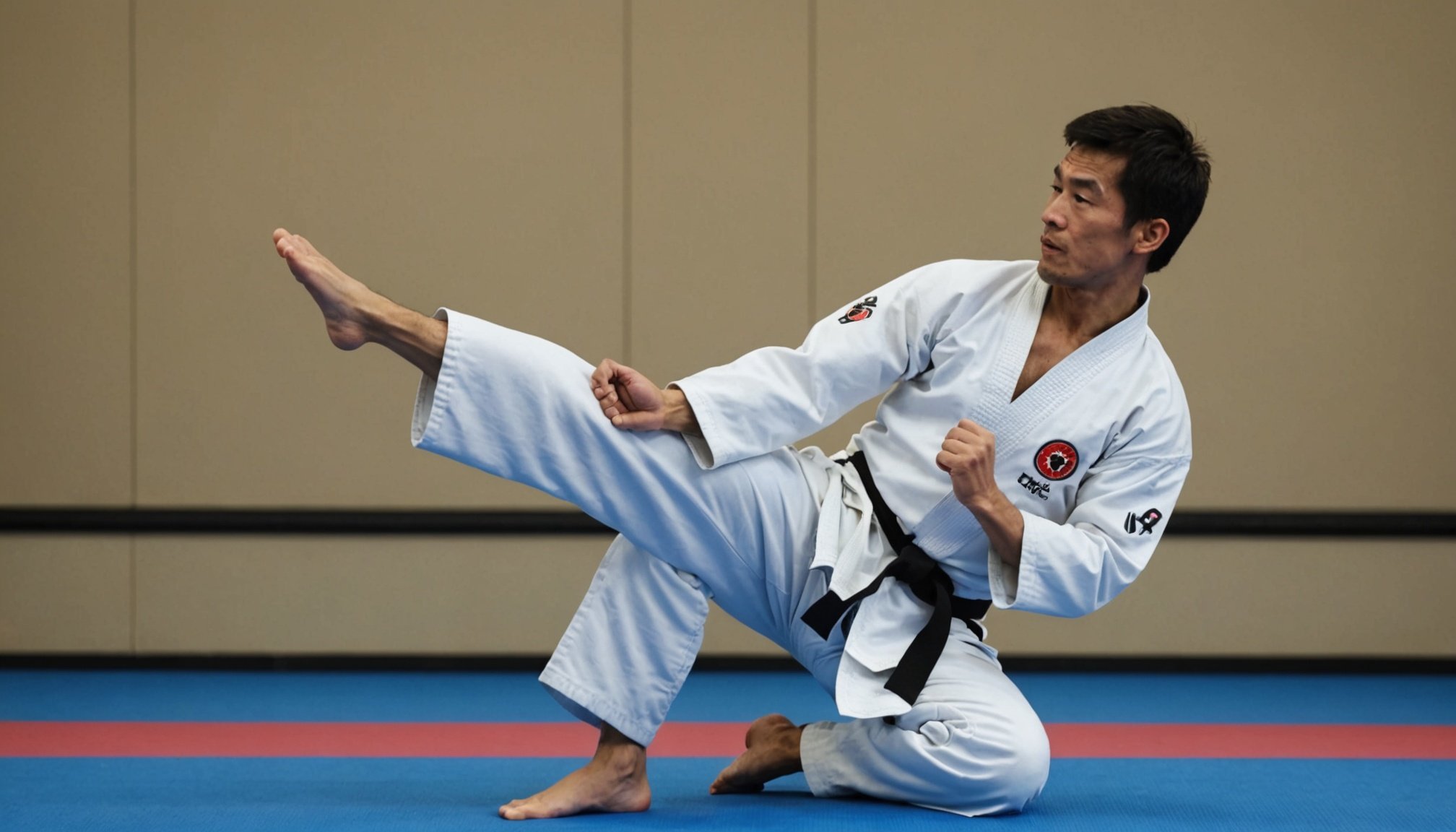Understanding Dynamic Stretching for Karate
Dynamic stretching involves active movements that take the body through a full range of motion, preparing the muscles for more intense physical activity. This type of stretching is crucial in martial arts, particularly karate, as it enhances both flexibility and performance.
Karate practitioners benefit significantly from dynamic stretching routines as they promote increased blood flow to muscles, improve cardiovascular health, and reduce the risk of injury. By engaging in dynamic movements such as leg swings, arm circles, and torso twists, karatekas can enhance flexibility—a key component for executing high kicks and swift movements essential in karate techniques.
The science behind flexibility in karate highlights its importance. Flexibility allows for greater range of motion, which in turn contributes to more powerful and efficient karate techniques. When muscles are warmed up through dynamic stretching, they become more elastic, allowing for quicker and more precise movements. This increased mobility is not just about performing better but also aids in avoiding strains and injuries during intense sessions.
In summary, dynamic stretching plays an integral role in karate by preparing the body, preventing injuries, and ultimately improving overall performance. As a result, incorporating dynamic stretching into a karate training regimen is essential for every dedicated martial artist.
Have you seen this : Mastering breakfall skills: key strategies for uk judo coaches to boost athlete performance
Essential Dynamic Stretching Techniques for Karate
Incorporating dynamic stretches into your karate warm-up is crucial for enhancing agility and preventing injuries. Below are essential techniques targeting key areas of the body.
Leg Swings
Leg swings are a fundamental part of dynamic stretches in karate. To perform them, stand on one leg and swing the opposite leg back and forth, maintaining a controlled motion. Focus on extending your range of movement without straining, as this movement boosts flexibility in the hips and hamstrings. It’s beneficial to incorporate leg swings at the beginning of your warm-up routine to increase blood flow and mobility, aiding in more effective executio of karate techniques.
Arm Circles
Performing arm circles involves extending your arms parallel to the floor and moving them in a circular motion. This simple technique plays a vital role in improving shoulder flexibility. Begin with small circles, gradually increasing the diameter to enhance muscle engagement and range of motion. Variations such as alternating the direction or speed of the circles can further target different muscle groups, promoting overall shoulder strength and endurance.
Torso Twists
Torso twists are executed by standing with feet shoulder-width apart, rotating the upper body from side to side. This dynamic stretch is excellent for improving core flexibility and stability, essential for maintaining balance in martial arts techniques. Aim for a set of 10 to 15 repetitions, ensuring that movement is fluid and controlled, which maximises effectiveness while reducing strain on the spine.
Incorporating Dynamic Stretching into Karate Training
Dynamic stretching plays a crucial role in karate warm-up routines, enhancing both performance and safety. Training routines often begin with a structured warm-up that primes the body for rigorous activities. This not only increases flexibility but also aids in preventing injuries.
Importance of a Structured Warm-Up Routine
A proper warm-up includes movements that mimic karate techniques, gradually increasing in intensity. This prepares your body for what’s to come, allowing muscles and joints to flex and adapt under strain. Without a structured start, the risk of strains or pulls increases, hindering progress.
Steps to Integrate Dynamic Stretching
You can incorporate dynamic stretches effectively by:
- Initiating with gentle joint rotations.
- Progressing to controlled leg swings and torso twists.
- Concluding warm-ups with technique-specific movements that transition smoothly into the main karate activities.
These steps ensure that dynamic movements are woven seamlessly into training routines, thereby optimizing flexibility integration.
Tracking Flexibility and Performance Progress
Monitor your improvement by keeping a flexibility journal. Record your range of movements and any progress in performing dynamic stretches with ease. Regular assessment helps you notice tangible improvements in your karate abilities, supporting sustained growth and development in practice. Making flexibility a measurable part of your regimen ensures it remains a priority in your training sessions.
Expert Tips for Effective Dynamic Stretching
Dynamic stretching serves as a key component in injury prevention and enhancing athletic performance. However, many athletes commit common mistakes that can hinder the benefits of these exercises. One frequent error is failing to maintain proper form, which can lead to strain rather than flexibility. Stretching expertise can significantly enhance performance by ensuring correct techniques are employed, boosting results.
Listening to your body is crucial; if a stretch causes discomfort rather than a gentle pull, it’s vital to adjust techniques appropriately. Each individual’s flexibility and strength vary, hence a personalised approach is essential.
Karate experts, with their stretching expertise, often emphasise the importance of controlled movements over speed, to maximise flexibility gains. They suggest focusing on smooth transitions and maintaining balance. This practice not only enhances muscular flexibility but also trains the mind’s focus, key to improving overall performance.
Key insights include:
- Ensuring the muscles stay engaged throughout the stretching routine to support joints.
- Avoiding ballistic or jerky movements that could cause injuries.
- Incorporating breathing techniques to facilitate muscle relaxation and improve stretching efficacy.
These performance tips cater to athletes keen on integrating dynamic stretching into their routines to effectively prevent injuries while augmenting their capabilities.
Local Resources and Training Opportunities in the UK
If you seek karate training in the UK that emphasizes flexibility, several local classes and workshops can help. Start by exploring reputable dojos known for their comprehensive training in both karate and dynamic stretching methods.
Local karate dojos often have instructors who specialize in flexibility workshops. For instance, some UK-based dojos offer workshops specifically designed to improve agility and range of motion. These sessions can provide targeted advice on dynamic stretching techniques integrated into karate practice.
Moreover, seminars are regularly held across the UK, focusing on specialized training methods. These events are instrumental for karate enthusiasts eager to enhance their skills and physical flexibility.
In addition to in-person sessions, there are online resources and communities essential for continuous learning. Websites and forums focused on karate in the UK can offer guidance and support. Exploring these platforms can also lead you to video tutorials and articles, giving you tips on incorporating flexibility into your routine. Engaging with community discussions can also offer insights from other karate practitioners.
For a comprehensive approach to improving flexibility in UK karate training, consider blending local classes with these online resources, maximizing the benefit of both worlds.
Safety Precautions for Dynamic Stretching
Dynamic stretching is a wonderful technique for karate training, but adhering to stretching safety guidelines is crucial. Before beginning, always consult with a coach or trainer to ensure you’re using the correct form and technique. This practice is pivotal in injury prevention, equipping you with the knowledge and confidence to proceed safely.
Recognising the signs of overstretching is imperative. Common indicators include sharp pain, muscle strain, and excessive fatigue. To mitigate such risks, ensure that you warm up adequately and increase intensity gradually. Avoid bouncing or using abrupt movements, as these can lead to undesired stress on muscles.
Here are essential guidelines for safe dynamic stretching:
- Warm-up thoroughly prior to stretching to increase blood flow and elasticity in the muscles.
- Listen to your body: if you experience discomfort, stop and reassess your technique.
- Focus on controlled movements, maintaining proper alignment and breathing.
Integrating these practices into your routine can not only enhance performance in karate but also safeguard against potential injuries. Always remember, safety is paramount, and being aware of these guidelines contributes greatly to a productive and injury-free stretching experience.











